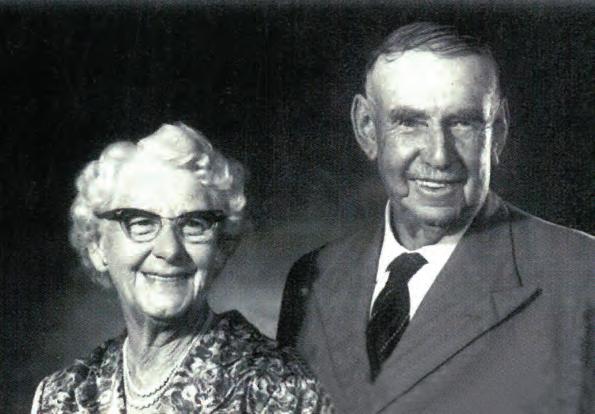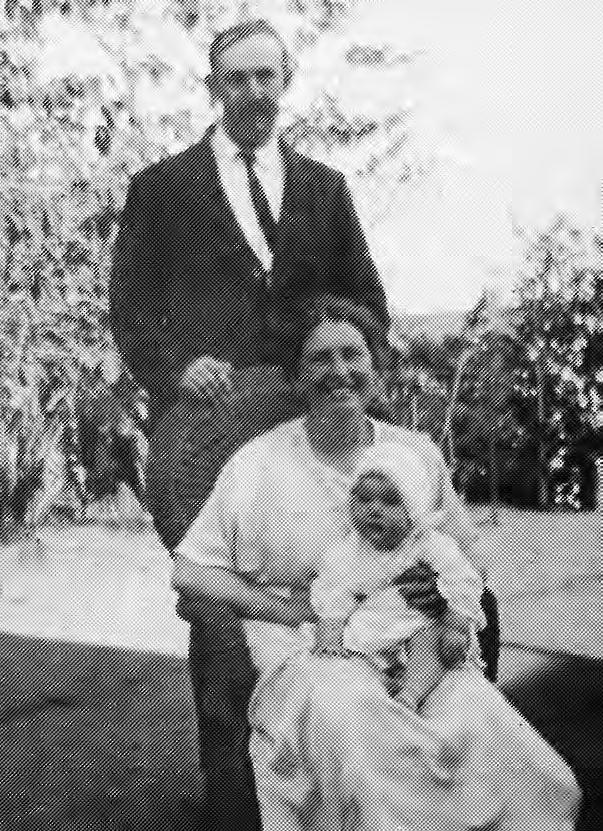
3 minute read
Farming ROOTS
from The Crest 95
Forest Hills in 2020 is an upmarket western extension of Kloof. But, a hundred years ago, it was a little farming centre on the edge of an African reserve. We know this from the reminiscences of Sheila Gillitt, whose grandparents were among these farmers.
Heinrich Harborth was born in Europe and came to South Africa to live with his uncle at New Germany. In 1886, Heinrich married 18-yearold Elise Dinkelman and the couple lived at Nkutu Farm, in present Forest Hills. There was a small community of farmers in the area within a radius of some 10km. They were a Mr Smith, the three Davidson brothers from Pinetown, who had a German mother, the Dinkelmans, and the Harborths. It was a close and happy community.
Advertisement
ROBIN LAMPLOUGH DELVES INTO FARM LIFE IN FOREST HILLS A CENTURY AGO
Each family had four or five children and a couple named Greenley opened a farm school close to the present Link Hills centre. The children walked five or six kilometres to school every day. When the weather was wet, they carried their boots around their necks.
After three years the Greenleys left, the Harborths’ eldest daughter, who had just left a school in Pietermaritzburg, took over the farm school at Waterfall. She was just 16.
Like many farmers of the day, Heinrich Harborth, to supplement his income, ran a transport business. Then he was awarded a contract to lay a telegraph line from Durban to Ladysmith. As a result, he was away from home for months at a time. Meanwhile,
ABOVE: Regina Harborth in a party dress, in 1910. RIGHT: Jane and Cliff Gillitt with baby Sheila, in 1922.
Elise brought up the children and ran the farm, as well as a small trading store which catered for Africans living at nearby Molweni, particularly selling bread freshly baked in the farm oven.
On the farm the Harborths kept pigs and poultry, and grew their own vegetables. They ground maize grains between two stones to make mealie meal. In addition, Elise made sausages, butter, cheese, buttermilk and maas. The girls all took turns to
LEFT: Cliff and Jane on their wedding day in 1914; and below, their golden wedding in 1964.



make the butter and to bake the bread, as well as helping with sewing and mending. Their two brothers helped with milking and feeding the livestock.
Once a week, a farm worker was sent on foot, via Bridle Road and Kloof, to Pinetown to buy meat. An outside cooler stood in the yard. It was constructed of wire netting walls filled with coal ash. A tray at the top of the structure trickled water into the ash, keeping the temperature down by evaporation. All cooking was done on a wood-burning stove.
Later the Harborth family left the area, moving inland to a new farm, which they called Albany Grove, in present West Riding. From there, Regina Harborth, the couple’s third daughter, travelled daily by train to attend school in Durban. It was perhaps at this stage in her life that she began calling herself Jane. Here, too, she met and later married young Clifton Gillitt, of nearby Emberton. When Cliff came courting, he had trained his horse to high-step down the driveway. What he discovered only later was that after every visit, Regina had to fill all the depressions the horse’s hooves had made on the drive.
So it was that Regina/Jane became the mistress of Emberton. She grew carnations which were sent daily by train to Durban’s flower market. On the same train, which stopped at Emberton each day, fresh milk was sent to Model Dairy. Over time, Jane laid out a magnificent garden which always caught the eye of travellers to the coast. Sadly, in the 21st century, the old Emberton has been replaced by a cluster of housing estates, and its farming roots are largely forgotten. *










